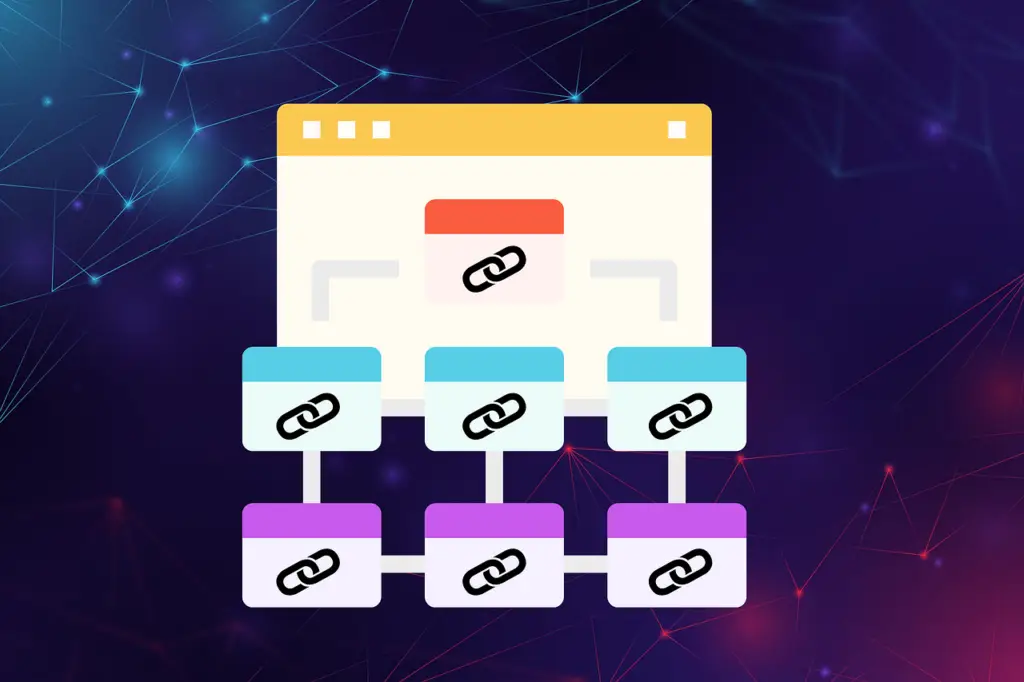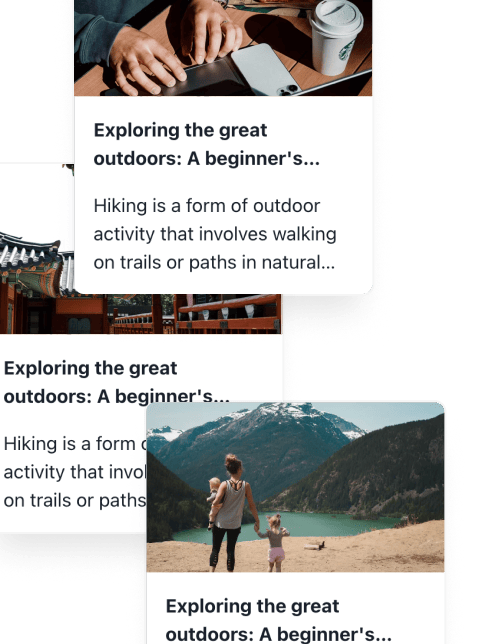
Imagine sending a dozen outreach emails and getting no replies while a competitor picks up backlinks and traffic; SEO outreach plays a central role in SEO Guaranteed Results. Link building, guest posting, influencer outreach, pitch templates, prospecting, and follow-up turn cold contacts into genuine relationships, but where do you start, and what works? This guide lays out outreach strategy, outreach campaign scripts, outreach email examples, and content promotion tactics so you clearly understand how SEO outreach works and can confidently use it to build valuable relationships.
To help with that, Arvow's AI article writer for SEO creates personalized outreach emails, guest post pitches, subject lines, and follow-up sequences. Hence, you spend less time writing and more time building links, boosting domain authority, and winning link acquisition.
What Is SEO Outreach?
 SEO outreach is a proactive process that centers on connecting with other website owners, bloggers, and influencers to foster partnerships that benefit all parties. The main aim is to secure quality backlinks from credible sources. When trusted sites link to yours, search engines view your content as more authoritative, which helps your pages rank higher on Google and other platforms.
SEO outreach is a proactive process that centers on connecting with other website owners, bloggers, and influencers to foster partnerships that benefit all parties. The main aim is to secure quality backlinks from credible sources. When trusted sites link to yours, search engines view your content as more authoritative, which helps your pages rank higher on Google and other platforms.
A successful outreach initiative goes beyond just requesting links. It’s about building genuine relationships by communicating with relevant contacts, offering valuable information, and ensuring there’s a clear mutual benefit. This can involve contributing guest articles, sharing original research, or providing something helpful that makes your content naturally worth referencing or discussing. Instead of spamming inboxes, a targeted approach focuses on personalized conversations and value-driven offers.
Earning high-quality backlinks is crucial, as these links are considered strong signals of trustworthiness and relevance by search engines. Good outreach can significantly enhance your website’s online visibility, attract new audiences, and strengthen your brand’s credibility, all without the ongoing costs of advertising. Additionally, these backlinks not only impact rankings but can also lead to referral traffic from readers who trust recommendations on their favorite sites.
Effective SEO outreach isn’t a one-time task. It requires ongoing effort, including researching niche websites, crafting tailored messages, following up politely, and measuring which tactics drive the best results. Over time, consistently earning links from respected sources compounds into better authority and a steady stream of organic visitors that grows your online presence.
Building strong SEO outreach campaigns requires expert guidance and the right tools to manage relationships and track results effectively. Arvow specializes in elevating outreach efforts by streamlining communication with influencers and authoritative sites, helping businesses secure valuable backlinks consistently. By leveraging Arvow's platform, companies can maximize their SEO impact, increase organic traffic, and build lasting digital authority.
Get 3 Free Articles when you Sign Up Today!
Stop struggling with content creation. Let Arvow transform your blog with feature-rich, factual articles that rank in search engines, all in just 30 seconds. Our AI SEO Writer doesn't just generate content; it automatically publishes, formats with images and videos, and intelligently links to relevant sources while maintaining your brand voice across 150+ languages. Join over 25,260 business owners who have turned their blogs into automated traffic machines—claim your three free articles today and discover why we're the content solution that's keeping entrepreneurs up at night.
Related Reading
Goals Of SEO Outreach
 1. Boosting Search Engine Rankings
1. Boosting Search Engine Rankings
One of the primary goals of SEO outreach is to improve your website’s position on search engine results pages (SERPs). Backlinks from authoritative, trustworthy sites act as strong endorsements to Google and other search engines. These links signal that your content is valuable and reliable, helping your pages ascend more quickly and sustainably through ranking algorithms.
2. Strengthening Brand Authority
SEO outreach helps establish your brand as a credible leader in your industry niche. When well-respected websites reference your content, it’s not only a boost for SEO but also for how potential customers perceive your reputation. This enhanced authority builds trust and signals expertise, positioning your brand as a go-to resource for relevant topics.
3. Building Meaningful Industry Relationships
Another important goal is to cultivate ongoing connections with influencers, editors, and business owners within your field. Outreach is not just about one-time link exchanges; it fosters collaboration opportunities such as guest blogging, co-marketing efforts, or joint ventures. Particularly for local businesses, these relationships can be invaluable for sustained growth and community presence.
4. Creating Long-Term SEO Value
Unlike paid advertisements that stop driving traffic once the budget ends, backlinks earned through outreach provide enduring benefits. Quality links can generate consistent referral traffic, enhance domain authority, and contribute to higher rankings over many months or years. This compounding effect makes SEO outreach a savvy investment in future visibility.
5. Expanding Audience Reach
SEO outreach increases the visibility of your content by placing it in front of new, relevant audiences, by targeting websites and platforms that your potential customers already trust, whether industry blogs or influencer channels. You introduce your brand to a broader, yet targeted, group of users without relying solely on organic discovery.
6. Attracting High-Quality Traffic
A well-honed outreach strategy focuses on driving visitors who are genuinely interested in your products or services. By aligning outreach targets with your industry and tailoring content to meet the specific needs and buyer journey stages of these audiences, you attract visitors with higher intent to engage, convert, and return. This quality traffic also sends positive behavioral signals to search engines, such as longer session durations and repeat visits, which can further enhance SEO performance.
Types Of SEO Outreach
 Broken Link Building
Broken Link Building
Broken link building is a smart way to earn backlinks by identifying broken links on other websites and suggesting your relevant content as a substitute. This strategy benefits both parties; the website owner enhances their user experience by fixing broken links, and you gain valuable backlinks that improve your site’s authority.
To execute this, use specialized tools like Ahrefs’ Broken Link Checker to locate broken links in your niche. Then, reach out with personalized emails offering your content as a replacement. Starting with resource pages is an excellent idea since these pages often contain numerous curated links and occasionally broken ones. You can find these by searching for your topic along with “intitle resources” on search engines.
Infographic Outreach
Infographics deliver data and information in a visually compelling and easy-to-digest format, making them highly shareable. With user-friendly tools such as Canva, you can design attractive infographics relevant to your niche that bloggers and websites will want to embed.
Embedding your infographic within their articles often earns backlinks plus social media exposure. Studies show that sites using infographics see, on average, 12% more traffic, highlighting their effectiveness in boosting both engagement and brand visibility.
Guest Blogging
Guest blogging involves writing articles for other websites' blogs, aligned with their editorial standards. This approach helps you reach broader audiences, build authority, and earn quality backlinks.
Start by identifying websites that accept guest posts and pitching relevant ideas. Once approved, produce high-quality content that reflects well on both your brand and the host site. Good guest posts foster trust and open doors to future collaboration opportunities. Honing your writing skills through business-focused copywriting resources will improve your success in guest blogging campaigns.
Link Reclamation
Link reclamation focuses on recovering lost or unlinked mentions of your brand, products, or content. Sometimes websites refer to your brand but fail to provide an actual link, which means missing out on SEO benefits.
Tools like Google Alerts help spot these unlinked mentions. Reach out courteously to ask site owners to add backlinks, thereby recovering valuable link equity. This not only boosts your SEO but also creates a better user experience by providing direct access to your content.
Social Media and Influencer Outreach
For content designed to be shareable, like expert roundups, product reviews, or trending topics, partnering with influencers and social media creators can significantly amplify your reach.
Engaging influencers across platforms such as Instagram, TikTok, and YouTube helps you drive targeted traffic. It often results in backlinks when influencers mention or link to your site on their blogs or channels. Even if backlinks don’t occur immediately, the networking and exposure can lead to fruitful collaborations that support long-term SEO growth.
Local SEO Outreach
If your business targets a specific locality, focusing outreach on local websites can deliver the best SEO impact. Local SEO outreach means connecting with regional directories, community blogs, local news outlets, event websites, and other geographically relevant platforms.
By earning backlinks from these local sources, you signal to search engines your relevance for location-based searches, improving your chances to rank for “near me” queries and appear prominently in local search results, including Google Maps.
How to Create an SEO Outreach Strategy
 1. Planning, Workflow, and Preparation
1. Planning, Workflow, and Preparation
An effective SEO outreach campaign starts well before any emails are sent or links are requested. The foundation lies in meticulous planning, establishing a repeatable workflow, and thorough preparation.
Define Clear Goals
Begin by articulating what you want to achieve. Are you aiming to earn a specific number of backlinks by a particular deadline? Or targeting influential websites within your niche? Your goal may be more complex, such as improving rankings on particular keywords or boosting domain authority. Setting well-defined, measurable objectives helps guide every step that follows.
Structure Your Workflow
To maintain efficiency and consistency, set up a dedicated process for your outreach. This can include dividing tasks like prospect research, pitching, follow-ups, and content creation into manageable workflow stages. Using project management tools such as Asana, Trello, or Monday.com can be immensely helpful. These platforms ensure accountability and track progress, keeping your outreach organized.
Equip Yourself with the Right Tools
Combine Customer Relationship Management (CRM) software with SEO analysis tools to streamline your outreach. For example, SEMrush or Ahrefs are excellent for identifying potential link partner sites and monitoring active backlinks. Utilize CRMs like Bigin or HubSpot to maintain contact information, track communication history, and manage client or partner relationships effectively.
Budget Wisely
While some opportunities for link-building or collaborations can be free, relying exclusively on unpaid outreach often limits scalability and impact. Allocate a realistic budget for high-quality content production, premium outreach tools, or even outsourcing tasks to specialized agencies or freelancers. Investing upfront in these resources can increase your returns through more authoritative backlinks and lasting partnerships.
Prioritize Quality Over Quantity
Not all backlinks hold the same value. It's better to secure fewer links from high-authority, relevant websites than numerous low-quality ones. Hence, focus your energy and resources on cultivating strategic relationships, as these yield better SEO benefits and often bring referral traffic as a bonus.
2. Prospecting
Prospecting is the art and science of identifying potential websites, blogs, or influencers that align with your SEO outreach goals. Unlike a simple Google search, successful prospecting demands a strategic approach that balances relevance, authority, and the likelihood of collaboration.
Conduct Strategic Research
Start by pinpointing sites that share your niche or industry focus. These sites should resonate with your content and audience to ensure backlinks will be organically valued by search engines and provide meaningful referral traffic. Avoid casting an overly broad net; target thoughtfully.
Evaluate Key Metrics
To qualify prospects, use SEO tools such as Moz, SEMrush, or Ahrefs to analyze several important indicators:
Domain Authority (DA) / Domain Rating (DR): These scores estimate a site's authority and backlink strength. Aim for websites with high scores to maximize link value. Generally, sites with metrics above 30-40 can be strong candidates.
Trust Flow (TF): Provided by Majestic or similar tools, this metric measures the trustworthiness of a domain based on the quality of linking sites. A TF above 15 is often seen as a healthy baseline.
Social Media Engagement: Robust social signals, such as active sharing, comments, and follower numbers, show that a website interacts effectively with its audience, increasing the outreach’s potential impact.
Niche Relevance: Sites focused on your industry or related topics provide more logical and natural backlink opportunities.
Contact Accessibility: Check if the site has a clear, accessible contact page or switched-on outreach procedures. Sites that make their contact details easy to find tend to be more responsive.
Analyze Current Link Profiles
Understanding “who else they link to” can reveal if the target site is open to partnerships in your niche. If they regularly link to competitors or similar content, they may be open to your outreach.
Detect Natural Link Placement Opportunities
Look for pages where your link would fit seamlessly, like resource lists, blog posts with related content, or editorial pieces that add value to both audiences without looking forced.
Streamline with Tools and Templates
Once you build a vetted list, employ CRM systems to store prospect details and manage interactions. Automate parts of the outreach process carefully using personalized email templates, but avoid over-automation, which can reduce authenticity.
3. Pitching
Crafting a compelling pitch can make or break your SEO outreach campaign. It’s the bridge connecting your research and prospecting efforts with successful link placements. Therefore, your communication must be persuasive, targeted, and respectful of the recipient’s time.
Personalize Your Message
Generic, copy-paste emails risk being ignored or relegated to spam. Instead, personalize every outreach by demonstrating you understand the prospect’s brand, audience, and values. Reference specific content they’ve published or their mission statement, showing that your approach is genuine and not mass-produced.
Communicate Value
Your pitch should quickly answer the question: What’s in it for me? Explain how your content, resource, or collaboration can benefit the recipient—whether by adding fresh content, providing valuable data, or enhancing their site’s value for visitors. Highlighting mutual gain creates motivation for positive engagement.
Keep it Concise and Focused.
Time is precious, so aim for brevity. A powerful initial email should introduce yourself, acknowledge the prospect’s work, state your offer, and include a clear call to action—all within a few short paragraphs. Avoid overwhelming them with too much detail upfront; save the specifics for later communications after interest is shown.
Use Professional Tone and Formatting
Maintain a polite, professional tone throughout your message. Use simple formatting, bullet points if necessary, and explicit language. A well-structured, readable email increases the chances it will be read fully rather than skimmed or skipped.
Prepare for Follow-Ups
It’s common for outreach recipients to need gentle reminders. Craft polite, value-adding follow-up messages to send if there’s no response after a week or so. Persistent but respectful communication can significantly improve conversion rates.
4. Negotiation
Negotiation is often a pivotal yet nuanced part of the SEO outreach process, especially when dealing with high-authority sites where backlinks carry substantial value and competition is higher.
Understand the Ethics of Link Buying
While outright buying of backlinks is generally frowned upon by Google and can lead to penalties, ethical link buying exists within transparent contexts. Google acknowledges that some buying and selling occurs as part of the web economy, provided it is done with proper disclosure and using “nofollow” or sponsored link attributes to avoid manipulating rankings.
Approach Negotiations Collaboratively
Rather than a combative mindset, view negotiation as an opportunity to build lasting relationships. Seek mutual benefits where both parties feel valued. For example, you may negotiate on price, content type, or additional promotion to sweeten the deal. Demonstrating flexibility and willingness to find common ground enhances trust.
Be Ready to Compromise and Bundle
If placement fees exceed your budget, consider requesting bundle offers—such as multiple posts, placements on sister sites, or combined social media mentions. Such packages can lower overall costs while boosting your SEO impact.
Clarify Terms and Conditions
Ensure that the prospect is transparent about their guidelines, disclosure policies, and link attributes they will use. This protects your website from potential penalties and maintains compliance with search engine rules.
Focus on Long-Term Partnerships
Prioritize building ongoing collaborations over one-off transactions. Repeat engagements often lead to better terms, more authentic content, and consistent backlink quality.
5. Content Creation
Once you’ve secured opportunities for link placements, the quality of your content becomes the centerpiece of your SEO outreach strategy. Producing engaging, relevant, and SEO-optimized content ensures your links not only get accepted but also provide lasting value.
Conduct Thorough Research and Add Unique Insights
Don’t settle for shallow or generic content. Deeply research your topic to provide fresh perspectives, original data, or valuable resources. Content that educates or solves problems resonates well with both audiences and site owners, increasing the likelihood of acceptance and future collaborations.
Follow SEO Best Practices
Optimize content with targeted keywords naturally integrated within the text, including headers and metadata. Use internal linking wisely to guide readers and search engines through your content. Maintain keyword density that enhances readability without stuffing.
Structure for Readability and Engagement
Create visually appealing, easy-to-navigate articles using headers (H1, H2, etc.), bullet points, numbered lists, and relevant images or infographics. Proper structure benefits readers and helps search engines understand your content hierarchy.
Match the Prospect’s Tone and Style
Adapt your writing style to the host site’s established voice and audience expectations. Whether formal, conversational, or technical, alignment increases the seamless integration of your content and builds authenticity.
Integrate Links Naturally
Ensure your backlinks feel organic and genuinely helpful rather than forced. Links should fit contextually within the content, providing additional value or reference points, which enhances user experience and search engine trust.
Professionalism and Timely Delivery
Submit your content punctually and polished, ready for publication. A professional approach leaves a positive impression, encouraging future partnership and goodwill with the host site.
6. Analysis and Link Monitoring
Securing backlinks is a significant milestone, but your SEO outreach strategy isn’t complete without continuous monitoring and thorough analysis. This ongoing effort helps you understand the actual impact of your outreach and guides future improvements.
Track Key Performance Metrics
Monitor traffic coming from your acquired backlinks to evaluate referral quality and volume. Assess improvements in search engine rankings for your targeted keywords and observe changes in domain authority or trust flow metrics over time. These indicators reflect the effectiveness of your link-building efforts.
Evaluate Link Placement Quality
Not all link placements are equal, even on the same site. Check exactly where your backlinks appear on the page. Links in prominent positions (e.g., within the first paragraph or relevant content sections) generally hold more SEO value than those buried in footers or unrelated areas.
Maintain Link Longevity
Regularly audit your backlinks to ensure they remain live and intact. Some links may disappear or be removed, especially if paid placements are involved. Stay proactive by following up with site owners if any links go missing to preserve your SEO benefits.
Calculate Return on Investment (ROI)
Compare the costs involved (be it in time, tools, content creation, or any fee) against the SEO and traffic gains you’ve achieved. This financial perspective helps you fine-tune budgeting and allocate resources more effectively moving forward.
Conduct Periodic Backlink Audits
Routine audits help you identify low-quality or toxic backlinks that could harm your site’s reputation and rankings. Use tools such as Google Search Console, Ahrefs, or SEMrush to review your backlink profile and disavow harmful links if necessary.
Related Reading
How to Find Relevant Websites For SEO Outreach
 Define Your SEO Outreach Goals
Define Your SEO Outreach Goals
Start by clearly defining what you aim to achieve with your outreach. Your goals could include increasing domain authority, driving targeted traffic, or enhancing brand visibility. Knowing your objectives will help tailor your outreach strategy and prioritize suitable websites.
Focus on Niche Relevance
Target websites that are related to your industry or niche but don't directly compete with you. For example, if your site is about travel photography, reach out to travel blogs, gear review sites, or photography resource pages. Expanding to related niches can also open more opportunities for collaboration.
Use Advanced Google Search Operators
Leverage Google's powerful search operators to find websites that accept guest posts or listings.
Examples Include
"write for us" + your niche
"guest post guidelines" + your niche
"keyword" intitle: resources
"keyword" inurl: links
These search combinations can uncover resource pages, listicles, and blogs open to link placements or guest contributions.
Analyze Competitor Backlinks
Review where your competitors are acquiring their backlinks using SEO tools such as Ahrefs, Moz, or Semrush. Identifying these link sources gives you a validated list of relevant and authoritative websites that also accept your outreach.
Evaluate Domain Authority and Quality
Prioritize websites with a higher domain authority (DA) than yours, as measured by tools like Moz or Ahrefs. Additionally, assess content quality and select sites with well-written, informative, and regularly updated articles. Avoid sites with thin, low-quality, or irrelevant content, as links from such sites may not provide value.
Look for Engagement and Traffic Metrics
Websites with active readership, consistent traffic, and reasonable engagement rates (likes, shares, comments) tend to have more influence and bring better referral traffic. Such metrics can be checked via tools like SimilarWeb or through visible social signals on the site.
Leverage Social Media and Influencers
Follow discussions on platforms like LinkedIn, Twitter, and Facebook to find bloggers, influencers, and website owners inviting contributions or collaborations. Smaller or rising content creators in your field can be more approachable and responsive than large established sites.
Organize Your Outreach Prospects
Create a structured spreadsheet to track potential websites, including details like domain authority, niche relevance, contact information, content type, and notes on outreach approach. This organization keeps your campaign efficient and helps monitor progress.
Find Direct Contact Information
Once you identify suitable websites, find the right person to contact. Check the site's "Contact" or "About" pages for editor or contributor details. Use professional networks like LinkedIn or email finder tools such as Hunter.io to obtain verified personal emails for more effective outreach.
Common SEO Outreach Mistakes To Avoid
 Lack of Personalization
Lack of Personalization
Stop sending one-size-fits-all outreach. Reference a recent post, a quote on their about page, or a piece of content you actually read. Use the recipient’s name and a specific line that shows you visited the site. Short examples work best, such as citing the article title and one quick insight, then explaining how your link, guest post, or resource aligns with that content.
Want a quick template? Try “Hi [Name], loved your piece on [article title]. I have a data-backed piece that expands on [specific point]. Would you consider linking or co-authoring a short section?” That level of detail raises reply rates and moves outreach from cold email to professional conversation.
Ignoring the Target Audience
Who is the decision maker for backlinks, content, or partnerships at the target site, such as an editor, a marketing manager, or a site owner? Segment prospects into roles and craft different pitches for each. Use prospecting tools like Ahrefs, BuzzSumo, LinkedIn, and manual checks on author bylines to build an accurate outreach list. Then map outreach goals to audience intent, such as resource page links want relevance, contributors want exposure, and editors wish to add unique value. When you target the right person, your pitch requires less persuasion.
Poor Subject Lines
Subject lines control open rate. Avoid generic phrases and weak calls to action. Lead with relevance or benefit, keep under 50 characters when possible, and test variants. Examples that work: “Quick add to your resource on [topic]?” or “[Name], a data point for your post on X.” Avoid all caps, heavy punctuation, and overt sales language. Want higher open rates? Personalize the subject with a short reference to their site or a recent article.
Overlooking Follow-ups
Most replies come from follow-ups. Create a short cadence: initial email, first follow-up at 3 to 5 days, second follow-up at 7 to 10 days, then a final polite close at 14 to 21 days. Each follow-up must add something new: a snippet of data, a simplified ask, or a testimonial from a related site. Use a CRM or outreach tool to automate timing, but keep content manual enough to feel real. How will you make each touch more useful than the last?
Over-optimizing Anchor Text
Repeat exact match keyword anchors and you risk triggering penalties. Build a natural-looking profile with a mix of branded anchors, naked URLs, long tails, partial match, and generic phrases like “learn more.” Track anchor distribution across new backlinks and aim for diversity across referring domains. When pitching a link, offer natural inline text and let editors choose the anchor if possible, to preserve editorial tone.
Skipping Quality Link Research
Quantity without quality wastes effort and can damage SEO. Check domain authority, organic traffic, spam score, topical relevance, and the site’s link profile. Manually inspect a few target pages: do they accept guest posts, link to external resources, or have active readership? Score prospects for relevance and link equity before you email. Prioritize sites that pass both quantitative and qualitative checks for the best ROI.
Sending Long, Unclear Emails
Long blocks of text reduce replies. Use three to five short sentences: who you are, why you’re emailing, one supporting proof point, and a clear call to action. Bullet one or two benefits when needed. For example: “Hi [Name]. I run research showing X. Your post on Y could use this cite. Would you like the short summary or the full dataset?” End with a single clear CTA to increase the chance of a positive response.
Not Offering Value
People link when they gain something: content, traffic, credibility, or time savings. Offer original data, a co-authored section, exclusive quotes, or social amplification. Propose a swap that saves them work, like turning your data into a short guest post tailored for their audience. If you ask for a link, add measurable upside such as a planned social push or a reciprocal editorial mention. Which benefit will appeal most to each contact on your list?
Neglecting Mobile Optimization
Many recipients read email on phones. Use single-column layouts, short paragraphs, and buttons or worded CTAs that work on mobile clients. Keep the subject and preheader concise so the main point shows on a small display, such as test deliverability and rendering in Gmail, Apple Mail, and Outlook mobile clients. Also, avoid large attachments and complex HTML that breaks on mobile.
Ignoring Analytics and Tracking
Track open and click rates, reply rates, and which templates convert into links or placements. Use tracking pixels wisely and attribute referral traffic with UTM parameters so you can see the referral value in Google Analytics. Run A/B tests on subject lines, send times, and follow-up copy. Log outcomes in your CRM and adjust your outreach list and messaging based on real outreach KPIs rather than hope. What metric will you test first in your next campaign?
Get 3 Free Articles when you Sign Up Today!
Arvow turns slow content cycles into a live publishing engine. Our AI SEO Writer writes factual, feature-rich articles in seconds, formats them with images and video, adds smart internal and external links, and publishes directly to your CMS. It adapts to your brand voice in 150-plus languages and keeps posts optimized for search intent. Over 25,260 business owners use Arvow to automate content production and scale traffic without adding staff. Want to test real output? Claim your three free articles now.
How Arvow Builds Search Ready Articles in 30 Seconds
You give a topic or keyword. The AI generates a full article that includes title tags, meta description, headers, schema markup, and SEO friendly URL suggestions. It inserts contextual links to authority sites, suggests anchor text, and places images with alt text and video embeds. The system also formats for readability so search engines and readers engage faster. You can set tone, length, and target keywords, then publish with one click.
How Arvow Boosts Your SEO Outreach and Link Building
Arvow creates content designed for outreach campaigns and link acquisition. It produces outreach-ready assets, guest post drafts, and email templates for blogger outreach and influencer outreach. It identifies prospect lists for guest posting, broken link opportunities, and authority site targets, and it suggests anchor text for organic link growth. You can export outreach lists to your outreach tool or CRM and start follow-up sequences that use personalization tokens for better reply rates. Want stronger backlinks and fewer manual steps?
Make Your Content Promotion and PR Outreach Easier
Content promotion needs outreach emails, social amplification, and relationship building. Arvow prepares short pitch snippets, press-friendly summaries, and social cards that speed outreach across channels. It creates campaign copy for PR outreach and influencer pitches, and it helps track referral traffic and new backlinks so you can measure ROI from outreach campaigns and outreach automation.
Automated On-Page Optimization That Works for Search Engines
Arvow handles meta tags, header structure, schema, canonical tags, and internal linking strategy so pages load and index cleanly. It optimizes images for size and alt text, builds clean URL slugs, and updates your sitemap after publishing. If you want to target domain authority gains, Arvow supports content clustering and pillar pages to create linkable assets that outreach teams can place on authority sites.
Scale Content and Outreach Without Adding Headcount
Save hours of content editing, outreach prospecting, and follow-up. Arvow plugs into popular CMS and outreach tools via API and Zapier, allowing you to automate outreach sequences and track replies. You can route prospects to outreach platforms, deliver guest post drafts, and monitor backlinks without manual list building. That reduces dependency on contractors and keeps campaigns moving.
Brand Voice, Accuracy, and Multilingual SEO
Arvow matches your brand voice by capturing sample content and style guidelines. It cites credible sources and links to them automatically, helping with trust and fact-checking. For international campaigns, Arvow localizes content for 150-plus languages and helps set hreflang tags so outreach targets and search engines see the correct version for each market.
Who Benefits Most from Arvow and Outreach Integration
Small businesses that want steady organic growth, agencies that need scalable content for clients, SaaS companies that want thought leadership and backlinks, and ecommerce brands that need product and category content all gain value. If your growth plan relies on guest posting, link building, or content promotion, Arvow supplies the assets and the outreach-ready materials.
How Arvow Works with Outreach Tools and Email Campaigns
Arvow generates prospect lists with metrics like domain authority and spam score so you can prioritize outreach. It exports contact lists, fills email templates with personalization fields, and supports follow up sequences to increase reply rates. Integrate with outreach platforms to automate sending, track opens, and record accepted guest post opportunities and backlink acquisitions.
Quality Control, Editorial Review, and Ownership
You keep final editorial control. Use the editor to tweak articles, approve images, and vet external links before publishing. Arvow preserves content ownership and supports role-based access so teams can review, schedule, and publish while keeping security and compliance in place.
Try It Now: Claim Three Free Articles and Start Outreach Faster
Sign up, set your brand voice, and request three tailored articles to see how content and outreach fit together. Use those pieces for guest posting, email outreach, and social promotion to quickly test backlink potential. Ready to feed your outreach pipeline with publishable content?
Related Reading
Tips for Blogs

Generate, publish, syndicate and update articles automatically
The AI SEO Writer that Auto-Publishes to your Blog
-
No card required
-
Articles in 30 secs
-
Plagiarism Free
